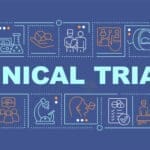Introduction
Adenosine Diphosphate (ADP) Receptor Inhibitors are a class of antiplatelet agents used primarily in the treatment of acute coronary syndrome (ACS) or in the prevention of thromboembolism, myocardial infarction, or stroke. These drugs function by antagonizing the P2Y12 platelet receptors, thus preventing the binding of ADP to these receptors, leading to a decrease in platelet aggregation and prohibiting thrombus formation. The P2Y12 receptor is a protein found on the surface of blood platelets, belonging to G protein-coupled purinergic receptors (GPCR), and acts as chemoreceptors for ADP.
Classification
- Thienopyridines
- Clopidogrel (Plavix)
- Prasugrel (Effient)
- Cyclopen-tyltriazolo-pyrimidines
- Ticagrelor (Brilinta)
- Non-selective
- Cangrelor (Kengreal)
Mechanism of Action
- P2Y1 Receptor Blockade: Inhibits platelet shape change and initial adhesion to the vascular endothelium.
- P2Y12 Receptor Blockade: Prevents the amplification of platelet activation, making platelets less sticky and less likely to form clots.
These drugs block the P2Y receptors, especially P2Y12, on the surface of platelets. This stops platelets from becoming activated and sticking together when ADP is present.

Pharmacological Actions
- Cardiovascular System: Reduced risk of arterial thrombosis, thereby decreasing the incidence of heart attacks and strokes.
- Hematological System: Reduced platelet aggregation leads to a decreased risk of clot formation in the blood vessels.
- Gastrointestinal System: Potential for gastrointestinal bleeding due to the inhibition of platelet aggregation.
Therapeutic Uses
- Acute Coronary Syndrome (ACS): Often used in combination with aspirin for dual antiplatelet therapy.
- Stroke Prevention: Used as an alternative or in addition to aspirin for secondary prevention.
- Peripheral Arterial Disease (PAD): Used to reduce the risk of limb ischemia.
- Post-Stent Implantation: To prevent stent thrombosis.
Adverse Reactions
- Bleeding: Most common and serious adverse effect.
- Gastrointestinal Issues: Nausea, vomiting, and diarrhea are common.
- Thrombotic Thrombocytopenic Purpura (TTP): Rare but serious condition.
Contraindications
- Active Bleeding: Including gastrointestinal and intracranial hemorrhages.
- History of Hemorrhagic Stroke: Generally contraindicated due to the risk of recurrent bleeding.
Drug Interactions
- Anticoagulants: Increased risk of bleeding.
- NSAIDs: Can enhance the antiplatelet effect, increasing the risk of gastrointestinal bleeding.
- Certain Antiretrovirals: May interfere with the metabolic activation of prodrugs like clopidogrel.
Conclusion
ADP Receptor Inhibitors are a cornerstone in the management of various cardiovascular diseases. Their ability to selectively inhibit platelet activation makes them invaluable in conditions requiring antiplatelet therapy. However, their use comes with the caveat of potential bleeding risks and drug interactions, necessitating careful patient selection and monitoring. As our understanding of these drugs continues to evolve, they remain critical in the armamentarium against thrombotic diseases.
Disclaimer: This article is for informational purposes only and should not be taken as medical advice. Always consult with a healthcare professional before making any decisions related to medication or treatment.
📚 AI Pharma Quiz Generator
🎉 Quiz Results
Medical Disclaimer
The medical information on this post is for general educational purposes only and is provided by Pharmacology Mentor. While we strive to keep content current and accurate, Pharmacology Mentor makes no representations or warranties, express or implied, regarding the completeness, accuracy, reliability, suitability, or availability of the post, the website, or any information, products, services, or related graphics for any purpose. This content is not a substitute for professional medical advice, diagnosis, or treatment; always seek the advice of your physician or other qualified health provider with any questions you may have regarding a medical condition and never disregard or delay seeking professional advice because of something you have read here. Reliance on any information provided is solely at your own risk.









